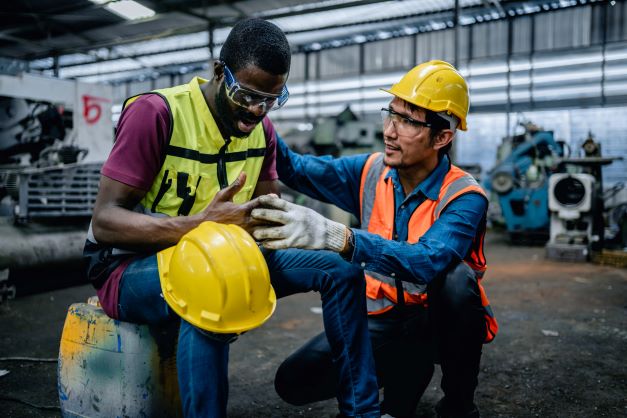All industries carry some level of risk, and accidents at work are part and parcel of any job in the UK. Even relatively safe environments such as off
All industries carry some level of risk, and accidents at work are part and parcel of any job in the UK. Even relatively safe environments such as offices contain health hazards, with the majority of workers suffering from musculoskeletal disorders such as repetitive strain injury (RSI) and back pain and the mishandling of kitchen utensils causing occasional cuts and burns.
According to a new study by GoCompare Life which analysed workplace fatalities over the last five years, construction is the most high-risk industry in the UK accounting for over 17% of work-related deaths. Operating powerful machinery, handling heavy loads, and performing tasks at great heights or on unstable structures all contribute to construction workers frequently facing dangerous situations while on site.
Given their unfamiliarity with the complex environments that construction workers frequently find themselves in, from sprawling building sites to houses undergoing renovation, apprentices are at high risk of accidentally harming themselves during their first few weeks and months on the job. Before they step into your work environment, take the time to educate your apprentice on vital health & safety practices that will help to protect them against on-site injury.
Equipment
First and foremost, get your apprentice kitted out with all of the necessary Personal Protective Equipment. Stress the importance of using PPE suppliers who provide quality gear tailored to your role such as cut-resistant gloves and anti-fog safety glasses. Even if the apprentice will not be using certain tools that require special additional gear, get them used to wearing all of the PPE that they could potentially need in when working in construction such as ear and respiratory protection.
Training
In addition to supplying the necessary PPE, ensure that you train your apprentice in how to wear it correctly and why it is important. Once you have made sure that they are safeguarding themselves properly, demonstrate the correct handling of all tools that they will be utilising as part of the job. Create a safe environment for them to test out the tools away from the main workspace and double-check their understanding with a thorough question and answer session. As well as training on tools, give general guidance on avoiding injury such as specifying the right way to lift heavy loads.
Supervision
Once the initial training is complete, some employers will simply let the apprentice loose to learn on the job. This is a mistake that is highly likely to result in injury. Ensure that your apprentice is supervised at all times and build up their skillset gradually, starting with the easier and less risky tasks. This way you can assess their skill level and be confident in which responsibilities they can handle on their own. As well as first-hand experience, do not underestimate how useful it can be to spend time watching a professional: give your apprentice the opportunity to observe qualified workers when they are conducting the more challenging manoeuvres.
Assessment
All construction workers should begin a new job by assessing the site they are working on to identify potential risks and put in place a range of best practices to safeguard against these dangers. When you are conducting your assessment, take your apprentice on the walk-through and verbalise the risks you have spotted and why they could lead to injury. This will help them to understand the inherent dangers of working in construction and how to do an on-site assessment themselves.



















































































































COMMENTS